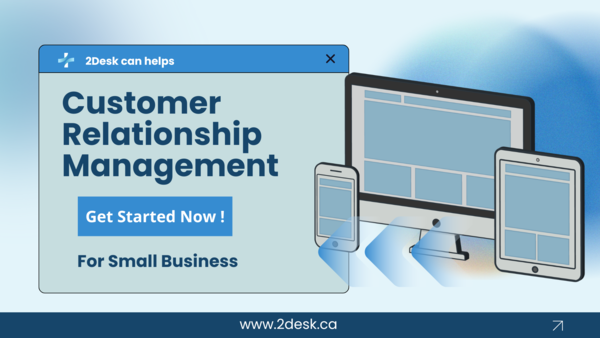As a small business owner, you wear many hats. You’re the CEO, the head of sales, the marketing director, and the customer service lead—all at once. In the early days, you might manage your customer interactions with a mix of spreadsheets, your email inbox, a notepad, and a really good memory. But as you grow, that system starts to crack. Leads fall through the cracks, follow-ups are missed, and valuable customer information gets lost in the shuffle.
If this sounds familiar, it’s time to meet your new best friend: the Customer Relationship Management (CRM) system.
A CRM isn't just another piece of software; it's a strategic tool that can transform how you interact with your customers and fundamentally change the trajectory of your business. In this guide, we'll demystify the world of CRMs and show you exactly how to leverage one for your small business.
What Exactly is a CRM System? (And Why Spreadsheets Aren't Enough)
At its core, a CRM system is a technology for managing all your company’s relationships and interactions with customers and potential customers. The goal is simple: improve business relationships to grow your business.
Think of it as a centralized, digital brain for your business. It stores every piece of customer and prospect information—contact details, communication history, purchase records, support tickets, and more—in one easily accessible place.
Many small businesses start with spreadsheets, and for a while, it works. But spreadsheets have critical limitations:
- They're static: They don't update automatically and can't track real-time interactions.
- They're prone to error: Manual data entry is a recipe for typos and outdated information.
- They don't offer automation: You can't set reminders, send automated follow-ups, or trigger tasks.
- They're terrible for collaboration: "Version 4_FINAL_final(2).xlsx" is a nightmare scenario. Multiple team members can't efficiently work from the same sheet.
A CRM solves all these problems. It moves you from a passive, reactive record-keeping system to a proactive, relationship-building engine.
A Practical Example
Imagine a prospect, Jane, fills out a contact form on your website.
- Without a CRM: You get an email. You manually copy her details into a spreadsheet. You email her back. A week later, you forget if you followed up. Your sales rep, Mark, calls her, not knowing you already spoke. It’s messy and unprofessional.
- With a CRM: Jane's information is automatically captured in the CRM as a new lead. A task is created for you to follow up. Your entire email exchange is logged under her contact record. When Mark logs in, he sees the full history and can have an informed, productive conversation.
That's the power of a centralized system.
The Game-Changing Benefits of a CRM for Your Small Business
Implementing a CRM is more than just an organizational upgrade; it's an investment that pays dividends across your entire business. Here are the key benefits you can expect.
-
Centralized Customer Data: This is the foundational benefit. Every interaction, every detail, every team member's note is in one place. This "single source of truth" means no more digging through inboxes or asking colleagues for updates. Anyone on your team can get a 360-degree view of a customer in seconds.
-
A Streamlined and Visible Sales Process: Most CRMs feature a visual sales pipeline, often in a Kanban-style board. You can track leads as they move through stages like "New Lead," "Contacted," "Proposal Sent," and "Closed-Won." This clarity helps you identify bottlenecks, forecast sales more accurately, and ensure no opportunity is forgotten.
-
Vastly Improved Customer Service: When a customer calls with an issue, your support team can instantly pull up their entire history—past purchases, previous support tickets, and notes from the sales team. This allows for highly personalized and efficient service, making customers feel valued and understood.
-
Powerful Automation of Repetitive Tasks: Small business CRMs are brilliant at automation. You can set up workflows to handle time-consuming tasks automatically.
- Send a personalized welcome email to every new lead.
- Create a follow-up task two days after sending a proposal.
- Assign new leads to sales reps on a round-robin basis. This frees up your team to focus on high-value activities like talking to customers and closing deals.
-
Data-Driven Decision Making: Stop relying on gut feelings. A CRM provides concrete data on what's working and what isn't. You can easily generate reports on:
- Which marketing channels are bringing in the best leads?
- What is your team's sales conversion rate?
- What is your average deal size? These insights are invaluable for refining your strategy and allocating your resources effectively.
Key Features to Look For in a Small Business CRM
The CRM market is vast, and features can range from basic to bewilderingly complex. For a small business, the key is to focus on the essentials. Don't pay for an enterprise-level system you'll never fully use.
Here are the must-have features for most small businesses:
-
Contact & Lead Management: This is the non-negotiable core. It should allow you to store detailed information, segment contacts with tags (e.g., "Hot Lead," "Past Client"), and view a complete history of all interactions.
-
Visual Sales Pipeline: The ability to see and manage your deals in a visual pipeline is crucial for any business with a multi-step sales process. It helps you stay organized and prioritize your efforts.
-
Task & Activity Management: Your CRM should function as your team's to-do list. You need to be able to create tasks, assign them to team members, set due dates, and link them to specific contacts or deals.
-
Email Integration & Tracking: Look for a CRM that integrates seamlessly with your email client (like Gmail or Outlook). The best systems will allow you to send emails from within the CRM and automatically log all correspondence to the relevant contact record.
-
Simple Reporting & Dashboards: You need easy-to-understand dashboards that give you a quick overview of your key metrics—your sales pipeline, team activity, and lead sources—without needing a data science degree.
-
Essential Integrations: Your CRM doesn't exist in a vacuum. Ensure it can connect to the other tools you rely on, such as your accounting software (QuickBooks, Xero), email marketing platform (Mailchimp), or calendar.
-
Ease of Use & Mobile Access: This is perhaps the most critical factor. If a CRM is clunky and difficult to navigate, your team won't use it, rendering it useless. Prioritize a clean, intuitive interface and a functional mobile app for managing things on the go.
How to Choose the Right CRM for Your Business: A Step-by-Step Guide
Choosing the best CRM for your small business isn't about finding the one with the most features; it's about finding the one that best solves your specific problems.
Step 1: Define Your Goals and Pains
Before you even look at a single CRM website, ask yourself: Why do we need this? Write down your top 3-5 pain points.
- Example: "We are losing track of follow-ups with new leads."
- Example: "Our customer service feels disorganized because we don't know a customer's history."
- Example: "We have no idea which of our marketing efforts are actually generating sales."
Step 2: Map Your Current Processes
Grab a whiteboard or a piece of paper and sketch out your customer journey. How does a person go from being a stranger to a happy customer? What are the key steps in your sales and service processes? This map will help you identify the exact features you need a CRM to support.
Step 3: Set a Realistic Budget
CRM pricing varies wildly, from free plans to thousands of dollars per month. Most small business plans are priced per user, per month. Calculate what you can comfortably afford, but also consider the potential ROI. A CRM that helps you close just one or two extra deals a month can often pay for itself.
Step 4: Shortlist and Test Drive
Based on your goals and budget, create a shortlist of 2-3 promising CRMs. Do not skip this step: sign up for the free trial for each one. This is the only way to get a real feel for the software. During the trial:
- Import a small batch of real contacts.
- Try to build your sales pipeline.
- Create and assign a few tasks.
- Most importantly, get your team to use it. User adoption is everything.
Step 5: Consider Scalability and Support
Your business is going to grow, and your CRM should be able to grow with it. Does the platform offer more advanced features you might need in the future? What kind of customer support do they offer? When you're stuck, good support can be a lifesaver.
Your First Steps After Choosing
Once you've made your choice, start simple.
- Import your contacts.
- Set up your sales pipeline.
- Train your team on the core functions.
Don't try to implement every single feature on day one. Focus on solving the biggest pain points you identified in Step 1. A simple, well-used CRM is infinitely more valuable than a powerful, complicated one that gathers digital dust.
A CRM system is no longer a luxury for large corporations;

